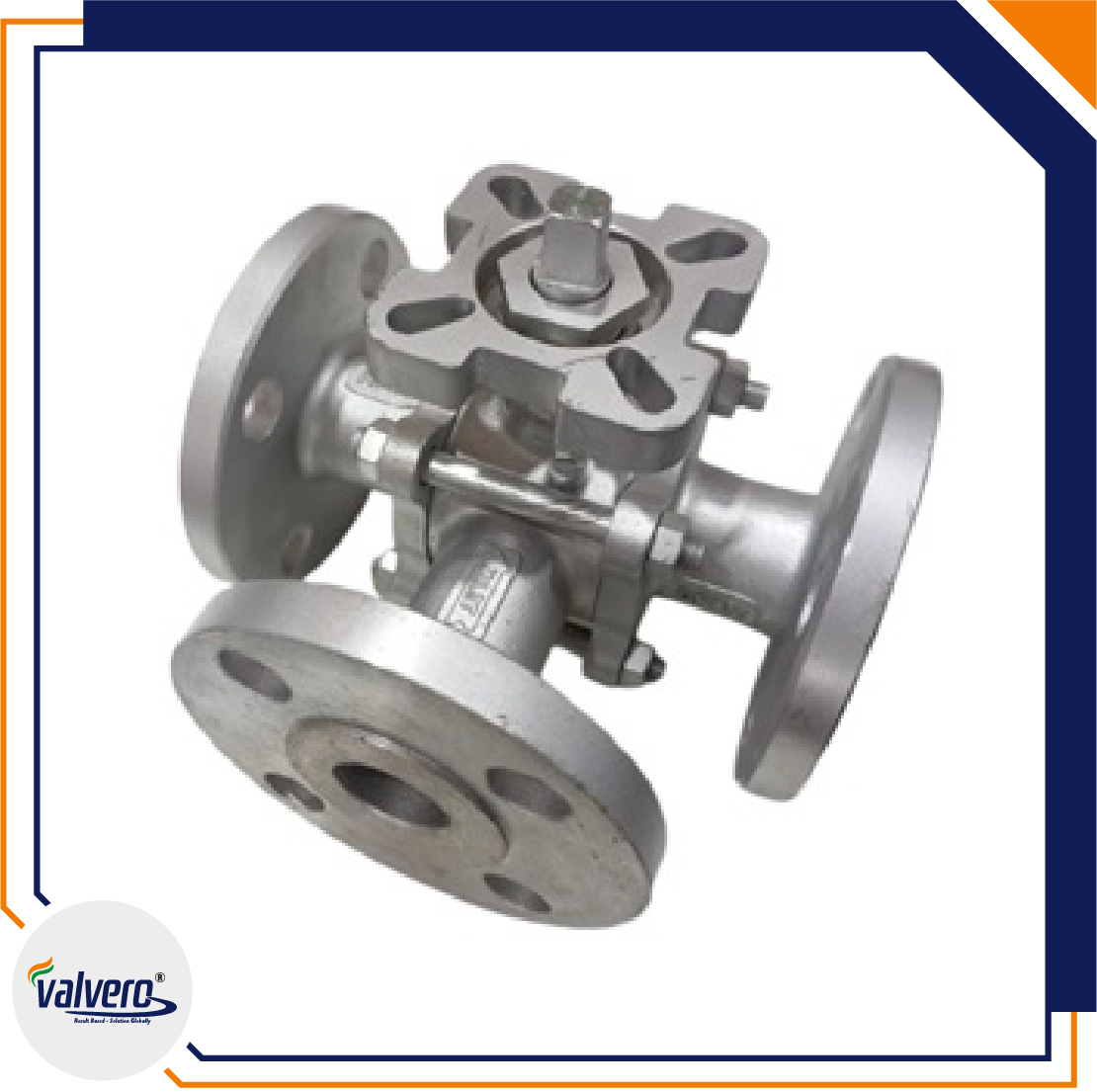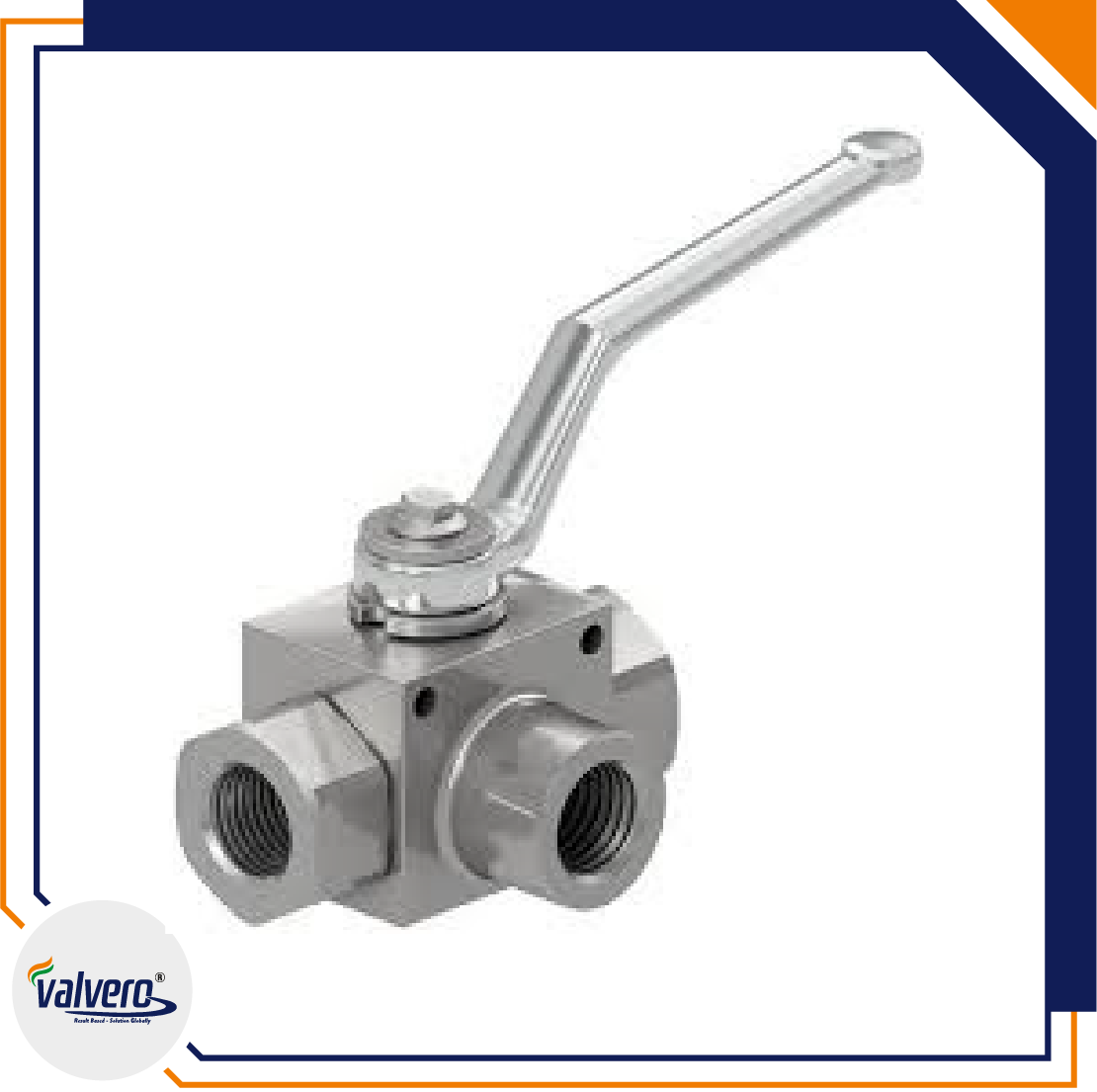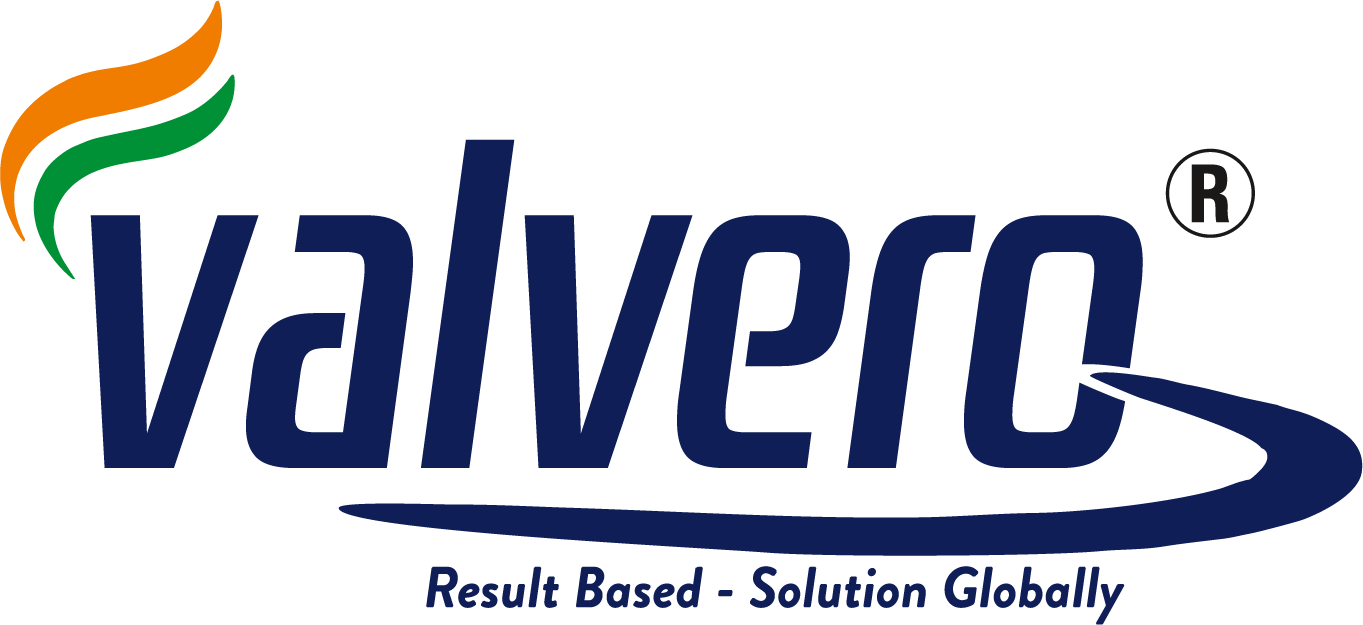


L port 3 way ball valve can switch the medium flow direction in two of the three pipelines, and also connect or close the two channels that are perpendicular to each other;T port 3 way ball valve can not only realize the switch of medium flow direction but also make the three channels connected to each other, at the same time, it can also close any channel, make the other two channels connected, flexible control of the confluence or diversion of the pipeline intermediary; Y type 3 way ball valve has a mutual Angle of 120° and 135°, according to the need to achieve the medium flow direction switch, it is perpendicular to the two channels tee ball valve flow resistance is smaller.
- Description
- Design Standard
- Feature
- Applications
- Series: BT100
- Size: 1″ to 8” (25 mm to 200mm)
- Material: ASTM A 216 WCB, ASTM A351 Gr CF8, ASTM A 351 Gr CF8M, ASTM A 217 Gr WC6, A 217 Gr WC9
- Special Material: Duplex 4A,5A,AB2,Inconel, Monel, CN7M
- Ball: Solid (SS 304, SS316, Duplex 4A, Inconel, Monel)
- Seat: PTFE, RPTFE, PEEK, Devlon TFM1600
- Port: Full & Regular (Reduced) Bore
- Pressure Rating: ASME #150, #300, #600
- End Connection: Raised Flanged, Butt Weld, NPT, BSP
- Design: Floating, ( Soft Seated)
- Construction: 3 Piece (3-Way)
- Operation: Lever, Gear Operated, Pneumatic Actuator, Electric Actuator
- Design Standard: BS 5351 / ANSI B 16.34 / API 6D
- Pressure Testing: BS 5351 / ANSI B 16.34 / API 6D
- Face to Face: ANSI B 16.10
- Flanged Drilling: ANSI 16.5
- Butt Weld: ANSI B 16.25
- Socket Weld: ANSI B 16.11
- Screwed End: ANSI B 1.20.1 [ BSP / NPT ]
- Fire Safe Testing: BS 6755 PART II / API 607 / API 6FA
- Quality Assurance: ISO 9001
- Fugitive Emissions: ISO 15848-1, API 622
- NACE: MR 0103, MR 0175
- Direction of flow: The L-port allows the fluid flow to be redirected in one direction or the other. The valve ball has a central orifice that aligns with one of the two inlet/outlet orifices, allowing flow in a specific direction.
- Versatility: These valves offer versatility in flow control by allowing the flow to be adjusted through different combinations of opening and closing the inlet/outlet ports.
- Hermetic sealing: 3-way ball valves with an L-port guarantee hermetic sealing when closed, preventing leakage and ensuring precise flow control.
- T-Port Design: These valves feature a “T” shaped orifice in the inner ball, which allows two fluid streams to be combined in a single conduit.
- Versatility: The T-Port allows the mixing of fluids, either to combine different liquids or gases or to generate a specific mixture.
- Precise flow control: 3-way ball valves with T-port offer precise control over the amount and proportion of fluids being mixed.
- Hermetic sealing: These valves provide a tight seal when closed, preventing leakage and ensuring system safety and efficiency.
- Air conditioning systems: These valves are used in air conditioning systems to control the flow of hot and cold water. They allow directing the flow to different zones or switching between heating and cooling modes.
- Industrial processes: In industry, they are used in processes where mixing of different liquids is required. The L-port allows fluid streams to be combined in specific proportions, which is useful in the manufacture of chemicals, pharmaceuticals, and foodstuffs.
- Fluid distribution systems: 3-way ball valves with L-port are also used in fluid distribution systems, such as in the selection of different water sources in a facility or in flow control in irrigation systems.
- Hot and cold water systems: These valves are used in residential, commercial, and industrial plumbing systems to combine hot and cold water streams, allowing a controlled and balanced supply of water to different points of use.
- Heating and cooling systems: These valves are used to mix the flow of hot and cold water in heating and cooling systems, allowing to maintenance of a controlled temperature in different areas or zones of a building.
Chemical and pharmaceutical - Processes: In the chemical and pharmaceutical industry, they are used to mix different chemicals and control the proportion of each component in the process.
Our Clients

















